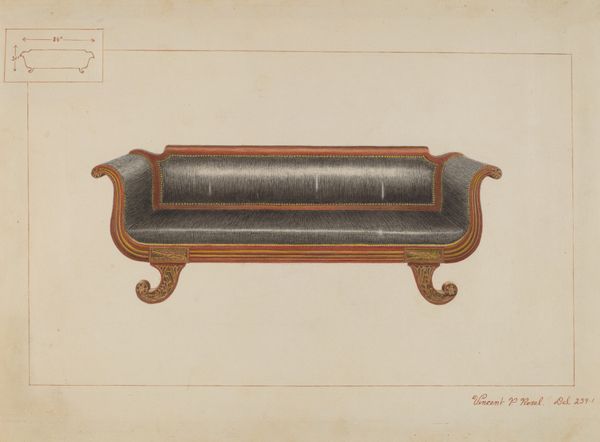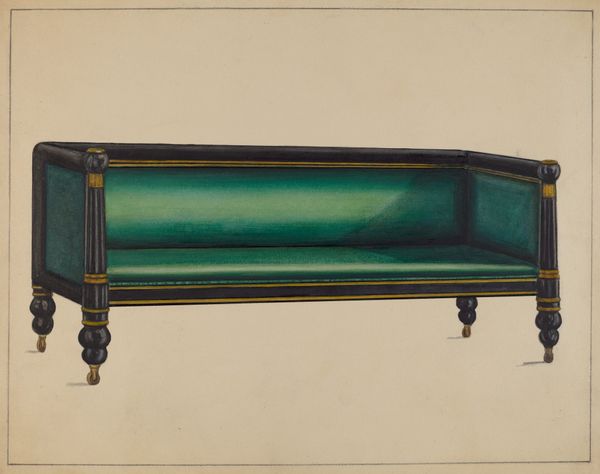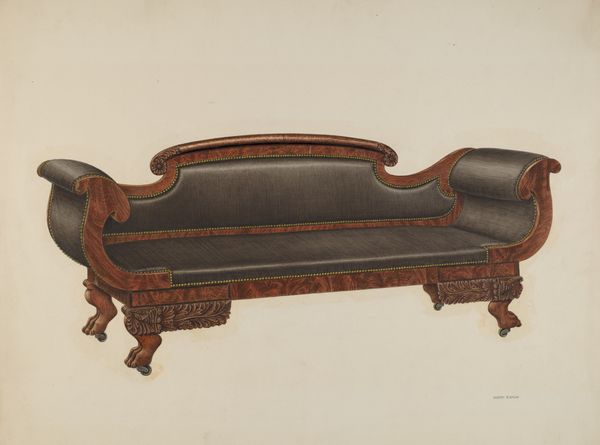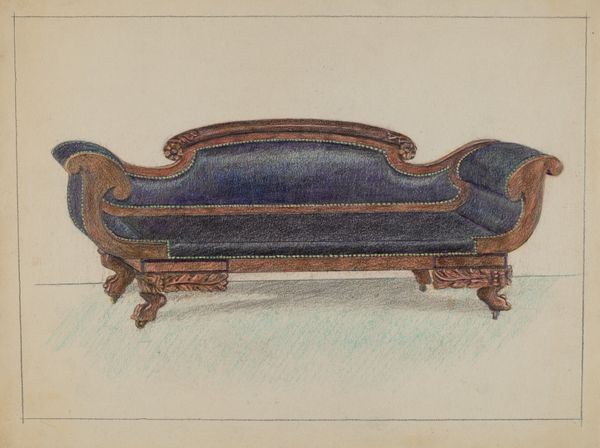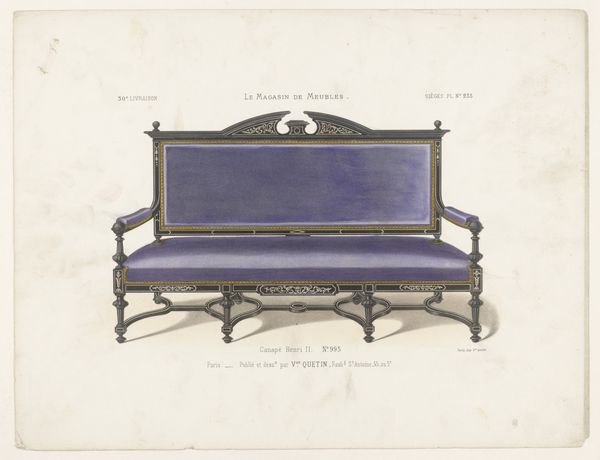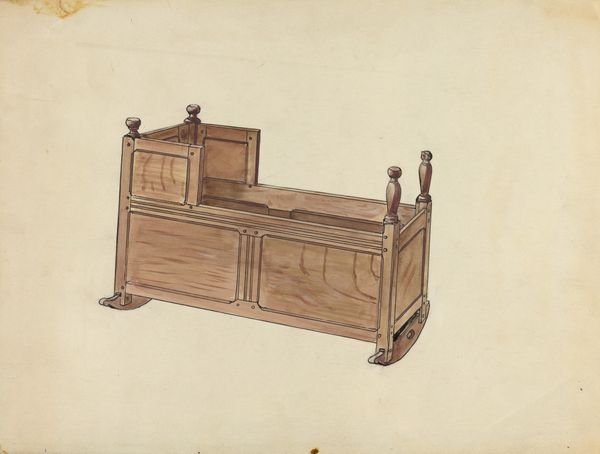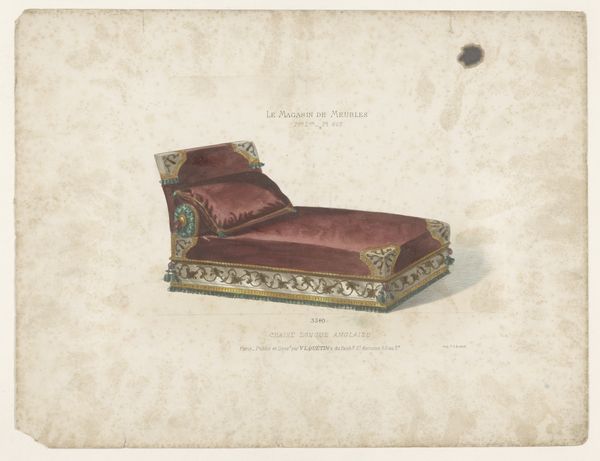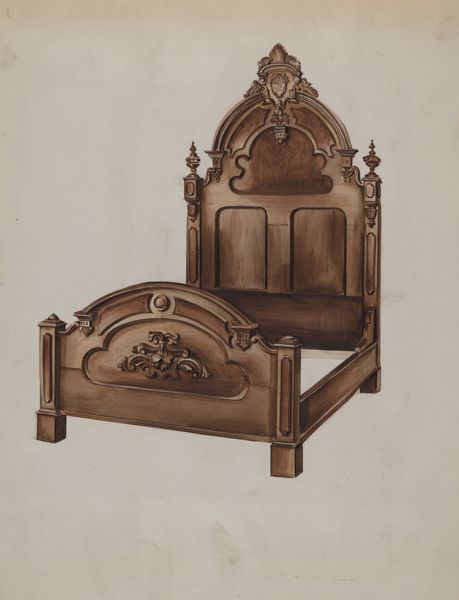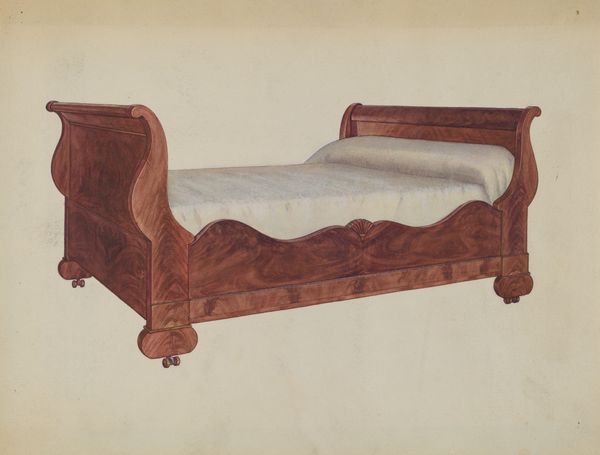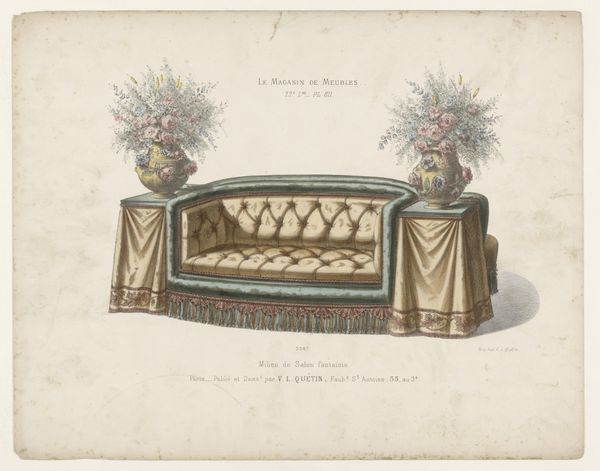
drawing, watercolor, pendant
#
drawing
#
water colours
#
watercolor
#
watercolour illustration
#
academic-art
#
watercolor
#
pendant
Dimensions: overall: 21.4 x 29.4 cm (8 7/16 x 11 9/16 in.)
Copyright: National Gallery of Art: CC0 1.0
Curator: This delicate watercolor is called "Sofa" and was rendered around 1940 by Elizabeth Curtis, capturing the design of Duncan Phyfe, a renowned cabinetmaker. Editor: My initial reaction is that it looks somber. The muted color palette, especially the charcoal-colored upholstery, evokes a sense of understated luxury tinged with perhaps a bygone era. It has a strong sense of stillness, doesn’t it? Curator: Yes, I think that’s fitting considering it comes to us as an image removed from the bustle of everyday use, which helps us examine shifting societal values associated with domestic space. These furniture designs reflect evolving social rituals and ideas of status during the Federal and Empire periods. Editor: The drawing itself, in its almost technical precision, feels almost like a record of a specific kind of domestic ideal – one of wealth and leisure. I am thinking how the form, like those carved claw feet, connects with concepts of class and access and maybe even exploitation during this time. How the materials may have been sourced… Curator: It's essential to recall that depictions of luxurious furnishings circulated widely in printed form at this time. Such images promoted design and consumption patterns and, more broadly, notions of proper homemaking and social advancement to a broad audience. Editor: True, thinking about that circulation reveals a fascinating relationship with aspiration and mimicry. Did access to this style remain an elite signifier? It is interesting how visual representations, like this one, perpetuate or dismantle such symbolic status. I wonder how people, women particularly, interacted with these types of designs and how these concepts were embodied in everyday practice and reality? Curator: That intersectionality offers such a needed perspective to more fully recognize not only the art but how its display reflects how a culture sees itself. Editor: Exactly! Thank you, it all reveals so much about both what they wished to preserve, and how their aesthetic intentions still echo today.
Comments
No comments
Be the first to comment and join the conversation on the ultimate creative platform.
